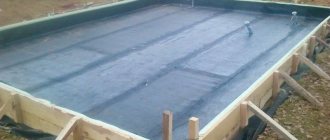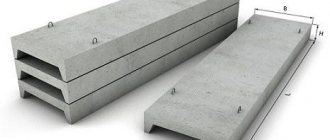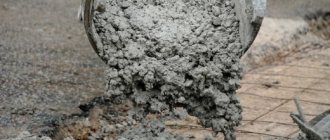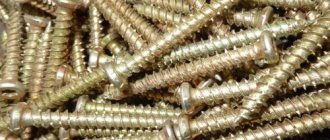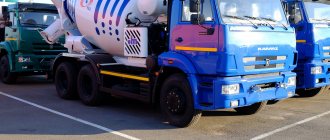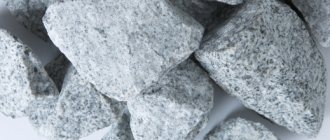Buildings for industrial and domestic purposes are often lined with decorative finishing materials, giving the appearance of the building additional protection and beauty. A good solution is to decorate the house with fiber cement boards, which have good decorative and functional characteristics. Fiber cement boards protect against the negative effects of natural phenomena and give the building an aesthetic appearance.
Facing the building with decorative finishing materials.
Why is this material so popular?
Fiber cement panels are practical, require minimal maintenance, are durable, and are easy to use. A significant advantage is that fiber panels are multi-textured; when used, you can choose any color and texture for the exterior decoration of houses and buildings. For example, to model a fiber facade like a rock; stone, brick, wood, plaster surface. It can be repainted; the raw materials are completely environmentally friendly and can withstand any weather conditions.
Where can fiber cement panels be used?
Imitation of wood trim with fiber cement siding
Facade fiber cement boards are used to decorate facades. Fiber cement siding is suitable for many construction and finishing processes, for example:
- Landscape design. Thanks to the use of fiber cement panels, it is possible to create an imitation of natural wood for the decoration of structural structures, recreation areas, gazebos, and garden details; make fencing for bridges, verandas, terraces;
- Application in functional areas and for interior decoration. Fiber cement panels are harmoniously combined with other building materials, which allows you to create spectacular interior solutions for various areas, using a diverse color palette and texture. With its help, window and door openings are distinguished, different colors are used in several parts of the building; combined with decorative plaster, facade tiles, basement, and vinyl cladding. Fiber cement facade panels can be textured, smoothly painted, with stone inclusions;
- Design of fences and fences. Fences look similar to wood, but are not susceptible to rotting or cracking. Fiber cement boards do not require treatment to protect against fire, are durable, and do not dry out over time;
- Fiber cement brick siding is successfully used in the design of new buildings and offices; restoration and thermal insulation of old premises, private houses.
What is fiber cement?
Fiber cement is an artificial building material. For its production, cement and sand are used, which are bonded together with fiber (cellulose fibers). An important part of the material is water and air; the initial density depends on the volume of these components.
There is a similar article on this topic - External and internal decoration of a wooden house.
medium-density fiber cement (designed for small construction projects and private projects) and high-density fiber cement (used for medium and large projects in large-scale commercial, industrial and residential construction).
Fiber cement has been used since the 19th century. It was developed by Ludwig Gacek, who experimented for 7 years and was able to create a material that is resistant to high and low temperatures, fire, wear-resistant and durable.
Asbestos fibers gave it resistance to tearing.
In our country, fiber cement originated in Bryansk in 1908. At first, asbestos was used, which was later replaced by basalt, aramid and cellulose fibers.
The most interesting material is the one with the addition of cellulose fibers, mineral fillers and cement. Cement makes products resistant to moisture and durable. Mineral fillers give fiber cement internal plasticity.
Cellulose fibers randomly placed in the filler make the tiles rigid in bending; they are important for the internal reinforcement of the material and reduce linear expansion under the influence of temperatures.
Methods of using the material
Fiber cement slabs are used in military, civil and industrial construction, furniture production, architecture and interior renovation.
Fiber cement in the form of slabs of different sizes and thicknesses, with a textured or laminated layer, is used as decorative and finishing coatings in interior decoration, even in rooms with high humidity and fire hazard.
The environmentally friendly material has a microporous structure and is approved for use in pharmaceutical, medical and preventive institutions, cultural buildings and educational facilities.
Fiber cement is often used to create ventilated facades. The curtain façade consists of two elements: decorative panels and metal profiles.
Technical characteristics and basic composition of fiber cement boards
The main parameters of fiber siding The
multi-component composition is based on cement (lightweight concrete), which makes up from 60 to 90% of the mixture, the rest is made up of reinforcing fibers from synthetics or cellulose, sand, mica, and mineral additives. Additional components may vary by vendor. The ratio of ingredients in the composition affects the density of the final product.
Weight and dimensions
The width of one fiber cement board is 20 centimeters, thickness is 0.8 cm. These parameters are constant; for some companies they may differ slightly. Knowing the density (for example, 1.65 g/cm³), the mass of one fiber cement panel is calculated. With a length of 180 cm, weight - 4.8 kg; 300 cm - 7.9 kg and so on. Common parameters: size 45.5x303x1.4 cm, weight - 22 kilograms.
Flammability of the material
Fiber cement siding is fireproof. The components in its composition are not subject to melting, do not ignite, and do not spread fire.
Production technology
In order to achieve high strength of fiber cement, autoclaves are used in production, as well as steam pressing at high temperatures and pressure.
- The first step is the production of fiber cement mixture in an extruder;
- The finished composition is evenly distributed into molds, rolled out to give the required thickness and pressed under a pressure of about 650 N/cm3. Just imagine how dense the structure will be after exposure to such a force;
- After pressing, the slabs must undergo a pre-hardening process. It takes 6 to 8 hours;
- After which, to speed up the final hardening process and give the material all of the above technical characteristics, the slabs are sent to autoclaves. There, under the influence of steam, the temperature and pressure of which reach 175°C and 10 atm, respectively, the production process is completed;
- As a result, we have a material that has no restrictions in use, either depending on the temperature conditions of different regions, or on the architectural affiliation of the building.
By the way, the last condition ensures the final stage of production, namely painting and varnishing the surface.
- The surface of the slabs can imitate a variety of textures - natural wood, brick, natural stone. This is achieved by pressing fiber cement into molds with the appropriate relief;
- It can be either absolutely smooth or textured;
- To add realism, the panels are painted in the shade closest to the selected texture;
- In addition to paint, a layer of varnish is also applied to the surface. Which protects the material from fading during prolonged exposure to ultraviolet radiation;
- The slabs may leave the factory unpainted. Everything is determined by the wishes of the customer. In this case, giving the facade the desired color should be done after completing the installation of the panels.
Distinctive features from other species
Exterior finishing of a building with fiber siding
Compared to vinyl siding, fiber siding does not require the use of additional elements during finishing; it has a larger mass, which makes it possible to ensure resistance to mechanical and impact loads. There is a wide color palette: there are cold, neutral and warm shades of any colors, as well as bright ones that are as close as possible to the natural range (shades of natural wood, stone, brick, marble, walnut, pear, ebony, light oak, etc.) . Coloring occurs in six layers, so the color fastness is maintained for a long time. The strength of fiber cement panels along the entire perimeter, a flat, smooth surface is achieved using a press at high pressure in autoclaves.
Estimated prices, well-known manufacturers
The creators of fiber cement panels are the Japanese, so their companies occupy dominant positions in the market. They offer high-quality material, the cost of which cannot be called low. Two brands are most famous: Kmew (Key Em Yu) and Nichiha (Nichiha). The estimated average cost of 1 m2 of Japanese panels for 2015-2016 is 1,600 rubles.
Please note that you need to buy Japanese fiber cement panels only from official distributors, otherwise you can buy a fake. Offices of the M-Facade company, which is the official distributor of the KMEW company, have been opened in Moscow, St. Petersburg, Voronezh, Vladivostok, Irkutsk, Krasnoyarsk and Ufa. There you can buy panels at the lowest prices in Russia. There you can order installation from specialists who have been trained in Japan and received the appropriate certificates. To avoid sad consequences from poor-quality installation, it is best to do just that.
Another well-known brand in Russia is the Belgian company Eternit (siding - Cedral, slabs - Equitone). Prices for fiber cement siding from this manufacturer are in the middle price category and range from 900-1800 rubles/m2, the price of slabs starts from 2500 rubles/m2.
Among the Russian manufacturers of fiber cement boards and siding, the companies Rospan, Kraspan, and Latonit can be noted. With a fairly high level of quality, their goods are significantly cheaper than Japanese ones. The average cost of products from the mentioned domestic companies is 800 rubles/m2.
Types of fiber cement boards and differences from each other
Imitation of FTP for various materials
Fiber cement boards from different companies differ from each other in density, ductility, and bending strength due to different compositions.
The cellulose present inside the filler helps to significantly reduce the expansion of fiber siding during sudden temperature changes and makes it more rigid in bending. Mineral additives provide plasticity.
Also, models from different manufacturers differ in width, thickness and weight (including per square meter); different ability to expand from moisture and temperature, frost resistance; elasticity; at a price. Different companies provide different guarantees for the life of the product (mostly up to 50 years).
Design
One can talk about the design of panels intended for arranging a ventilated façade for an eternity. Therefore, I’ll tell you a little about the facing material, which is in great demand.
Slabs with the following texture are in demand:
- under the tree;
- under brickwork;
- under masonry;
- under decorative plaster.
Popular panels are the following shades:
- fiery red;
- sunny yellow;
- soft peach;
- sky blue;
- noble chocolate;
- royal lilac;
- virgin white;
- soft cream;
- bright green;
- deep emerald;
- luxuriously golden.
I guess I'll stop here. The color palette is so rich that it would take several days to list all the tones.
By using so-called fiber cement siding, you can easily turn an ordinary and nondescript building into a real work of art.
Advantages with disadvantages
Positive characteristics of fiber cement boards:
- Low thermal expansion, which ensures constant and normal dimensions;
- Non-flammable, safe, non-toxic;
- Frost-resistant, have low water absorption. Corrosion resistant;
- Characteristics and appearance remain unchanged under different weather conditions;
- Resistant to fungi, bacteria, insects;
- Fiber cement boards are not empty inside, they are dense and rigid. They are highly resistant to mechanical damage, strong, and do not bend;
- The color is permanent and the products do not require repainting for a long time. Beautiful, aesthetic, stylish, have a decent appearance.
Disadvantages of fiber cement boards:
- High price. Cheaper models are made without a protective layer, because of this their linear deformation is approximately 2%, the color becomes duller much faster, and the level of hydrophobicity is lower;
- Additional processing of joints, cuts, places where fasteners are installed;
- A large mass of siding products creates a load on the building and requires a sheathing of increased strength.
Advantages and disadvantages
Among the many advantages of the material, the following stand out:
- Long service life, more than 50 years;
- High degree of moisture resistance;
- The material perfectly resists temperature changes;
- Excellent thermal insulation performance;
- Environmental cleanliness;
- The panels are 100% non-flammable;
- When exposed to fire, the material will not melt;
- Excellent sun resistance;
- Large selection of textures and colors.
Among the disadvantages of the material is that it is inferior in appearance to decorative bricks and tiles, but in all other respects it is ideal.
Cladding the facade of a house with fiber cement panels with imitation brick Source stroidominvest.ru
How façade fiber cement panels are made
In most cases, fiber cement boards for facades are produced using a special machine. It consists of industrial cloth, several containers and cylindrical parts that rotate during operation. The device produces large-format copies on an industrial scale.
All elements undergo careful testing and selection, after which they are placed in containers. In a special device, the components of the solution are mixed in dry form, after which water is added and the ingredients are thoroughly mixed until a homogeneous consistency. Next, the mass is fed into a special mixer, through which the formed sheets are squeezed out. The blanks are left for 8 hours, during which they harden, after which they are hardened at high temperature and dried. Dried sheets are treated with antiseptic and fire retardant agents and coated with paint. Products are finished with products that create a molecular film of oxygen, then immersed in cassettes. Finished panels are inspected, packaged, and then sent for sale.
Other technologies are used for workpieces with special purposes (for example, heat-resistant panels, shiny, colored). In this case, the additives necessary for the desired effect are used. The stacking press provides high-quality characteristics.
Rules for cutting and storing fiber cement panels
Using a circular plate for cutting FTP
The specimens are easily cut, and the cut areas look neat and even. Before cutting the blanks, it is recommended to leave them in a dry room, protected from rain or snow and not exposed to direct sunlight. Cutting is done on a stable workbench, in a well-ventilated area or outdoors. The products are placed with the decorative side down on a soft material so as not to spoil the coating. This procedure should be performed by professionals; during work it is necessary to provide protection to the eyes and respiratory organs. It is recommended to cut with a diamond-coated hand-held circular saw and only on dry workpieces. In this case, the saw blade should be 5 mm below the finishing material. Small elements can be cut using an electric jigsaw with a carbide file. After each cut, it is important to immediately remove sawdust, sand the cut edges and tint them with acrylic: in most cases, paint is included in the delivery set.
It is recommended to store building materials in closed places without exposure to negative environmental factors. If the humidity is high, then it is necessary to remove the shrink wrapping of the pallet (dispose of it or store it in a separate place); leave a special gasket between the plates; implement free passages between rows. If façade sheets are stacked, they are stored on pallets that are securely and levelly installed on a horizontal surface. They must not be stacked in a row on top of each other. It is also important to avoid direct contact of slabs with acidic and alkaline environments, organic solvents, alcohol, and fuels and lubricants. The maximum storage period for opened goods should not exceed three months, taking into account all the basic conditions met.
During finishing work, unpacked fiber cement siding must not be left open, even for a short period.
Scope and types of plates
We mentioned that the thickness of the panels ranges from 6 to 16 mm. Depending on this indicator, the scope of application of the slabs also changes:
- The minimum thickness indicates a significantly lower weight of the slab and that its cost will be lower than thicker slabs. However, as the thickness decreases, the strength of the material decreases. Therefore, 6 mm panels are used for cladding those surfaces that experience minimal wind loads and are maximally protected from some sides. For example, for the exterior decoration of a loggia, this would be the best option. In general, this thickness is used for finishing inside buildings;
- Thickness 8 mm is standard and generally accepted. With this value, optimal strength parameters are provided at an acceptable weight;
- panels with a thickness of 10 mm in cases where it is necessary to ensure a higher degree of resistance to various physical loads. Please note that it is physical, that is, we are talking about direct contact. Such panels are used to cover the first floors of public buildings for various purposes in busy places where there are large concentrations of pedestrians. Therefore, if the task is to clad a residential building that has a fenced area, it is wiser to get by with slabs of a standard thickness of 8 mm, thereby saving a certain amount of money;
- Plates with a thickness of 12, 14, 16 mm are used for installation using a system of hidden fastenings where particularly durable facades are needed. This thickness provides not only increased strength and stability, but also high noise and heat insulation.
Fiber cement panels are also widely used for cladding the following elements:
- Internal walls of buildings for various purposes;
- External cladding of high-rise buildings, as the panels can easily withstand high temperatures and gusts of strong wind;
- For exterior finishing of wooden houses;
- For the reconstruction of old buildings, which, after finishing, are transformed beyond recognition;
- You can build an interior partition from fiber cement panels, and you will receive a ready-made planning element that does not require further finishing;
- For cladding rooms with high humidity - bathrooms, showers, baths, saunas, swimming pools;
- For finishing stoves and fireplaces;
- And even for making window sills.
Additional elements and fastening of fiber siding
Composition of materials for fastening fiber cement panels
It is recommended to make the hole for fastening to the building in advance. The diameter of the hole should be 2 millimeters smaller than the diameter of the fastening screw, the gap from the edge of the slab (vertically and horizontally) should be from 1.5 to 3 centimeters. The size of the sheathing should not exceed 60 cm vertically and 120 cm horizontally.
When attaching fiber siding to a building, it is not recommended to over-tighten the screw, as over-tightening may cause functional damage during use. It is important to maintain the technological gap between the tiles. If there is no decorative strip, then the distance should be at least 0.4 cm; if present - 0.2 cm on all sides. For fastenings it is allowed to use nails, clamps, and rivets.
Installation of fiber cement siding elements
Characteristics
Well, advantages are advantages, and technical characteristics are above all. Heat-resistant fiber cement sheets proudly demonstrate the following technical characteristics:
- class – NG (non-combustible material);
- density – 1.5 g/cm3;
- tensile strength – from 22 MPa;
- impact strength – 2 kJ/m2;
- frost resistance - from 100 cycles;
- moisture absorption – from 8%, but not more than 20% of the total mass;
- temperature regime – -60...+80°С;
- weight 1 m2 – 16–24 kg;
- service life – more than 60 years;
- color retention - up to 60 years.
Quite good, isn't it?
Step-by-step instructions for installing fiber cement panels
Fiber siding installation diagram
Different manufacturers, as a rule, have developed different installation technologies. They must be carried out by special teams, in accordance with building codes. There are several points for installation work:
- To begin with, the walls are cleaned of dirt and the necessary markings are made;
- The sheathing is installed, the brackets are installed using anchor bolts (the length depends on the building material of the walls). Subsequently, the load-bearing parts of the frame structure will be attached to them;
- Thermal insulation is made, for example, from mineral wool, which is fastened with disc-shaped dowels (density per 1 square meter from 5 pieces, minimum depth level - 3 cm), a vapor barrier layer is laid on top. Mount vertical and horizontal metal profiles. Installation of a horizontal profile (0.12 cm in diameter) to the brackets occurs using self-tapping screws, the placement step is 0.6-0.7 m. A gap should be left using vertical profiles every 6 m (to compensate for expansion). The vertical frame structure is mounted from U-shaped profile pipes, the distance between which is 40-60 cm;
- Carry out finishing work, install ebb tides and install slopes;
- Perform installation work for decorative and sealing parts. Install finishing materials;
- Seal seams with moisture-resistant sealant.
It is extremely important to consistently follow the FTP installation technology and have relevant experience in this field of activity.
Installation
Installation, as I said, is quite simple. However, now you will see this for yourself.
Tool
To work you will need the following tools:
- water level or laser;
- ordinary building level;
- rule - to control the general plane;
- grinder - cutting panels;
- screwdriver;
- hammer drill - for fastening brackets in a concrete or brick wall;
- saw or electric jigsaw - when working with wooden blocks;
- roulette;
- knife;
- square;
- scissors;
- hammer.
Armed with the tools, you can get to work.
Installing fiber cement boards around doors and windows
To decorate windows and doors, 2 methods are used:
- Decorated using galvanized steel;
- The finishing is done using similar materials as the façade cladding (selected according to color and texture).
For installation, self-tapping screws of 0.48 × 2 cm are used. To pair the fiber cement panels with the window trim, the ends of the panels are cut at an angle of 45 degrees. The joints are thoroughly sealed using special means. Processing of the inner top and side parts of the window opening is carried out after installation of the main finishing material. For finishing, a special box coated with polymer is used. It is attached to the frame and profile of the supporting frame structure. The pitch of the fastening elements is 40 cm, the thickness of the box is not less than 0.55 mm.
How to properly store and how to cut slabs
The installation process does not always occur immediately after delivery of the necessary material to the site. There can be a lot of different reasons for this, starting with unfavorable weather and ending with the fact that you purchased materials while the price was favorable, or even better - on promotion. In any case, one of the main tasks is to ensure proper storage. This is necessary not only to ensure that no damage to the material occurs, but also to ensure that it does not lose its geometry and flatness. Otherwise, problems may arise in the future in the form of poor joining of the panels to each other or a “wavy” facade. Fiber cement panels should be stored as follows:
- In any case, the material is shipped to the construction site on special pallets, and even laid in such a way that the front side faces up. This order of things must be strictly maintained at all times. Even after you take the panels to work and start cutting them as needed, fold the panels face up;
- If the unloading process was done manually, then the pallets were probably missing. In this case, as a base, you need to build a homemade frame from wooden beams of the same height. They need to be placed in increments of no more than 40 cm;
- If the slabs will be stored outside any room, they must be covered with a tarpaulin or thick film so that they do not become dirty or wet in the rain or snow.
to cut the slab into pieces of the desired size:
- Using a regular grinder or circular stove. In this case, the panel should lie face up on a flat, solid base. To avoid a crooked saw or deviation from the dimensions, the plate must be fixed to the base so that it does not move when force is exerted from the cutting tool;
- Sawing can also be done using an ordinary jigsaw. It’s not for nothing that it’s called a universal tool. In this case, the slab is laid face down. The saw blade must be made of carbide material. If your jigsaw has a pendulum function, it is recommended that you turn it on. It is also necessary to ensure that the slab remains stationary during cutting.
Major manufacturers of fiber cement boards
Kraspan
Kraspan company logo
The product is based on fiber cement sheet; The front surface is matte, colored, and consists of a primer coating, which is characterized by high adhesion. The back side is covered with a water-repellent layer. All plates have a polyurethane, acrylic coating. Standard parameters of specimens: 122×119×0.8 cm; length 156 and 240 cm; weight 16.7; 14.5 kg/m².
Ltm
LTM company logo
LTM slabs are manufactured using Finnish technology using high-tech equipment. An important manufacturing feature is natural drying, which makes it possible to increase the strength and density of the workpieces, making them homogeneous. Facade fiber cement panels are: made of polyurethane, with a smooth overlap - without shine and glossy; with acrylic coating for plaster; with acrylic matte coating; mass-dyed sheets.
Rospan
Rospan company logo
Domestic fiber cement boards. The composition contains safe, environmentally friendly elements: wood chips, Portland cement, antibacterial admixtures, marble chips, liquid glass. The product is capable of maintaining its original characteristics in temperatures no higher than 50 degrees Celsius and no lower than 40 degrees Celsius in cold weather. Humidity should be no more than 95%. Due to the technical limitations of the product, its cost is significantly lower than that of Japanese organizations.
Latonite
Latonit company logo
The pressed boards from the manufacturer Latonit contain cement, fiber fibers, and mineral fillers. There are painted and unpainted slabs available, with girths of 6, 8 and 10 mm; size 120×150 cm, 300×150 cm; 360×150; 360x20. The product meets the stated quality standards; acrylic, weather-resistant paint and varnish compositions are used when painting.
Nichiha
Nichiha company logo
The company is leading in Japan, but is also popular in Russia. Basically, fiber cement boards have a thickness of 14 mm; size 14.5×100cm; weight from 17.3 kg/m². The slabs are of very high quality, have a nanohydrophilic self-cleaning surface: dirt can be easily removed during rain; the coating reliably protects the facade from mold, and due to the absence of static electricity, dust does not accumulate. Nichiha is used for cladding ventilated facades in the construction of low-rise buildings, buildings, hotels, recreation facilities, and private houses.
Kmew
KMEW company logo
Japanese fiber cement boards, with hydrophilic acrylic coating. Thickness: 1.4; 1.6; 1.8; 2.1 centimeters, width 45.5 cm, length 303 cm, weight 16 kg/square meter. You can choose a texture like stone, rattan, art panel, brick, wood, tiles of any color. Among the significant advantages of the product are its high level of noise insulation, seismic resistance, and the implementation of quick, simple installation at any time of the year.
Eternit
Eternit company logo
The company has high physical and decorative characteristics of its product. The siding is produced in a Belgian factory and there is a wide, varied selection of fiber cement panels available. Thickness 1-1.2 cm, length - 360 cm, density - 1300 kg/cubic meter. They are made from natural raw materials: cement, mineral fiber and sand. The color palette contains both universal shades and original, designer shades.
Decover
Decover company logo
The shapes of the slabs are universal; various methods of installation work are suitable for them. Additional elements can be made from the panels themselves, which reduces time and money costs. The material is high-strength, elastic, non-toxic. Parameters: 360x19x0.8 cm, weight - 11.97 kg, density is 1800 kg/cubic meter.
Main components
Fiber cement is a composite material. The main components used in its production are:
- dense fibers (fiber);
- mineral fillers;
- cement holding the structure together.
Fibers are obtained by impregnation with special solutions (zinc chloride, sulfuric acid, calcium thiocyanate) and further pressing several layers of paper or cardboard from pulp and wood pulp. Due to the random arrangement of cellulose fibers, the fiber has high bending resistance; it prevents linear mechanical stretching and thermal expansion of the material, performing a reinforcing function and being responsible for the rigidity of the finished slabs.
Below you can see the appearance of fiber cement panels:
Here you can view the full catalog of KMEW fiber cement panels..>>
The use of fillers facilitates the design and improves the performance characteristics of the panels: it imparts internal plasticity, increases elasticity and flexibility. Cement is responsible for the strength and moisture resistance of products. This production allows us to obtain a very durable, yet lightweight and flexible material.
How much will it cost to finish the facade with fiber cement panels?
The price directly depends on the cost of fiber cement boards, the area of the proposed construction site, as well as additional services, if any are required. Russian-made fiber cement panels are much cheaper than Japanese fiber cement panels: from Latonit, packing panels on gray bars costs from 500 rubles; painted packaging on a pallet from 3000, gray - from 1400 rubles. The Nichina company sells slabs for 2,320 rubles per square meter. Price Kmew from 1400 rubles.
Finishing openings with fiber cement boards costs an average of 200 rubles/linear meter, fiber cement siding (installation) - 550 rubles/m², installation of metal sheathing on brick or concrete - 250 rubles/linear meter, hemming overhangs with fc boards - 500-700 rubles/linear meter .
What types are there?
There is a wide choice of materials, but the most common home decoration is with fiber cement panels to resemble brick, stone and wood. Brick cladding looks ideal on any buildings: country cottages, houses, offices, shopping centers and so on. You can choose to imitate new or aged brick, it all depends on the design of the building. Stone-look panels will be an excellent solution in cases where it is not possible to use natural material. This finish looks very beautiful and solid. Boards that imitate wood are often used for finishing the facades of country houses.
How to choose
Composite finish
The standards of fiber cement panels from different manufacturers are defined in special documents: DIN EN 12467 and GOST 8747-88.
When choosing high-quality finishing materials made of concrete and synthetic fibers, it is recommended to pay attention to the following characteristics:
- Equipment . The panels must be accompanied by suitable fittings and additional elements: profiles for collecting sheathing and slides, acrylic paint for processing cuts. It is more profitable to purchase hanging slabs together with metal profiles and decorative panels
- Compound . Japanese manufacturers add an additional layer of glass ceramics to the panels to protect them from precipitation and UV radiation
- Identical structure and uniform density of the panels . Before purchasing, you should carefully check the side ends of the slabs to ensure they are the same thickness along the entire length
- Weight . An important characteristic when carrying out installation work at height. Knowing this parameter will also give an idea of the amount of fasteners required
- Characteristics of fiber . KMEW panels use cellulose fibers, and Nichiha panels use hardwood chips
- Mounting type . Siding with clamp plates has no visible fastening and looks more sophisticated and more expensive
- Quality of painting on the front side . The appearance of the building and its aesthetic appeal depend on this
The thickness of the panels also plays an important role: the higher it is, the more fasteners are needed. With an indicator of 16 mm, clamps are used, for which special grooves are provided. Thicker slabs also help add more texture to the finish.
When choosing the color and design of panels, it is best to contact a specialized construction market. If you select colors in an online store, you may end up disappointed, because the computer monitor distorts the colors.
Fiber cement panels for exterior finishing are a great way to make the appearance of a building more attractive, insulate it and protect it from fire, moisture and noise. The exceptional decorative and operational characteristics of the slabs make it possible to create a unique building design, and even a novice in installation work can install them.
The videos provide step-by-step instructions for installing fiber cement panels from different manufacturers:
Installation instructions for façade fiber cement panels
Fiber cement panels for exterior decoration of a house: high-quality cladding with unique properties (65+ Photos & Videos) + Reviews
Thermopan Facade panels
Fiber cement panels for exterior decoration of a house: high-quality cladding with unique properties (65+ Photos & Videos) + Reviews
The secrets of proper lathing are given in the video:
